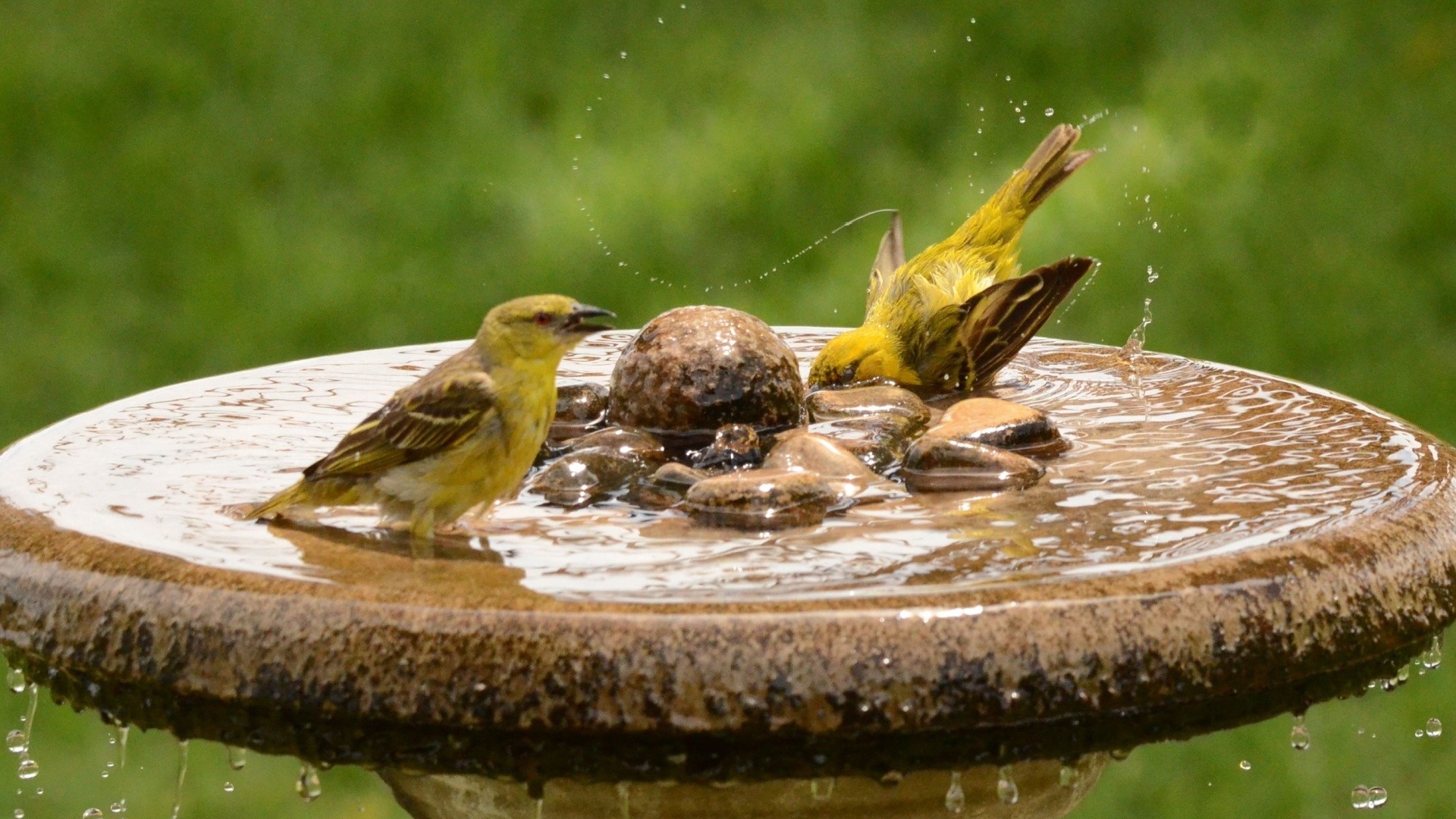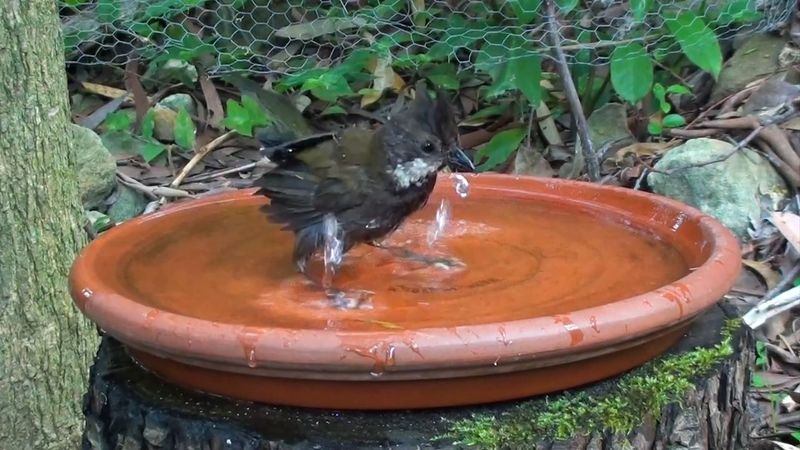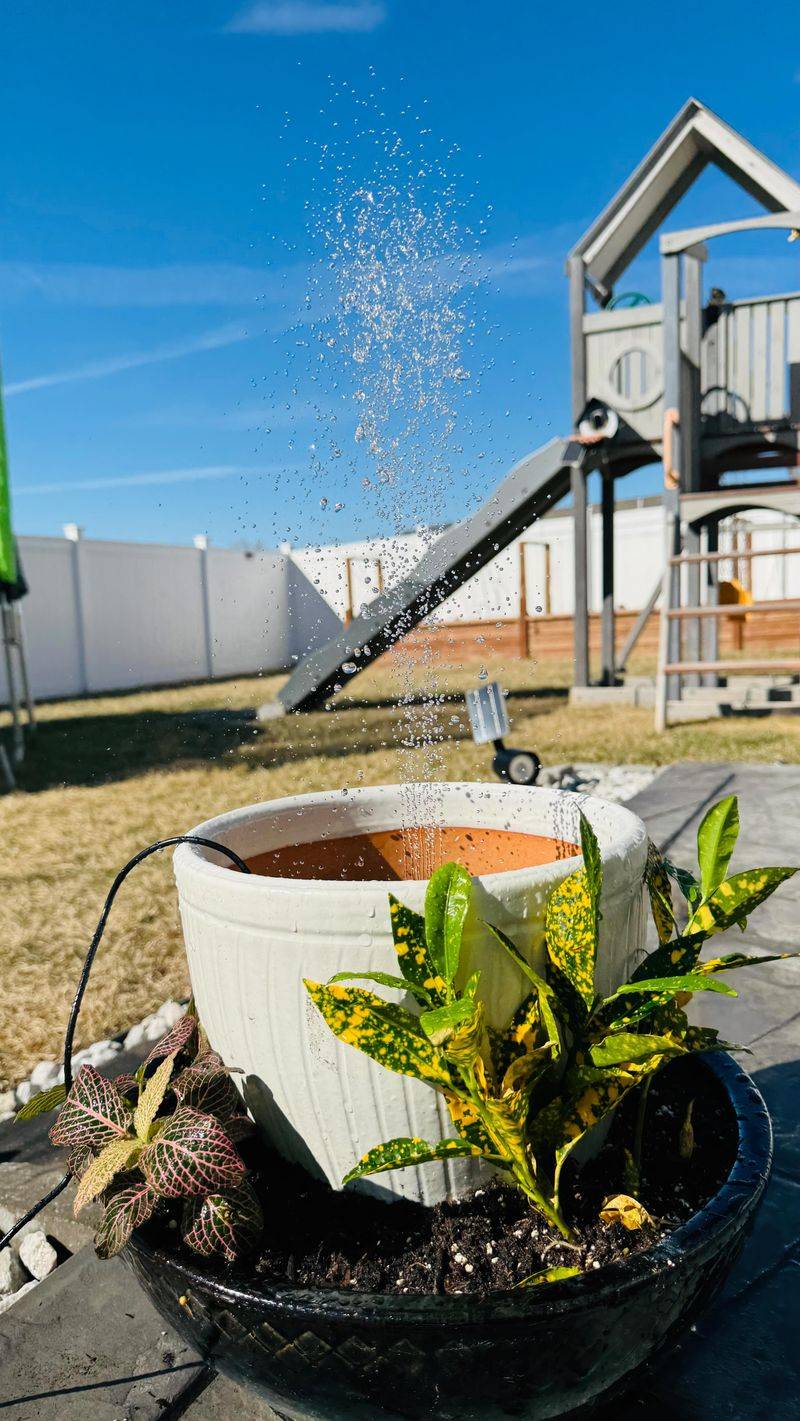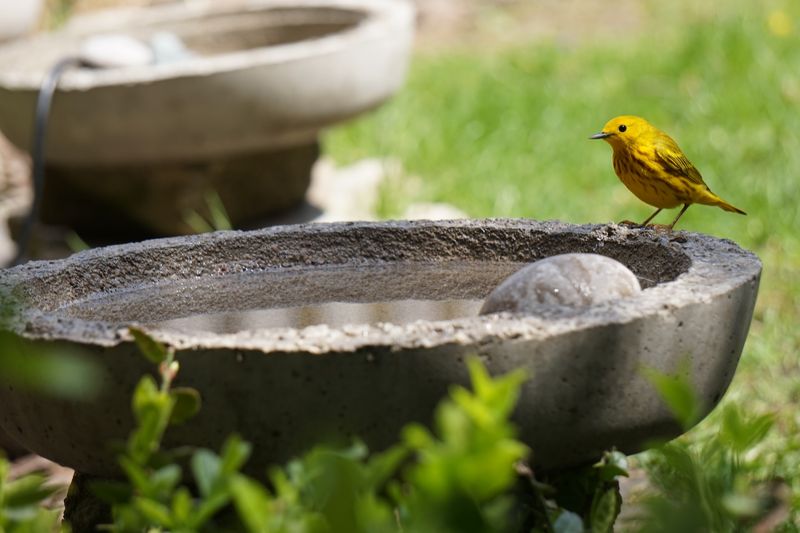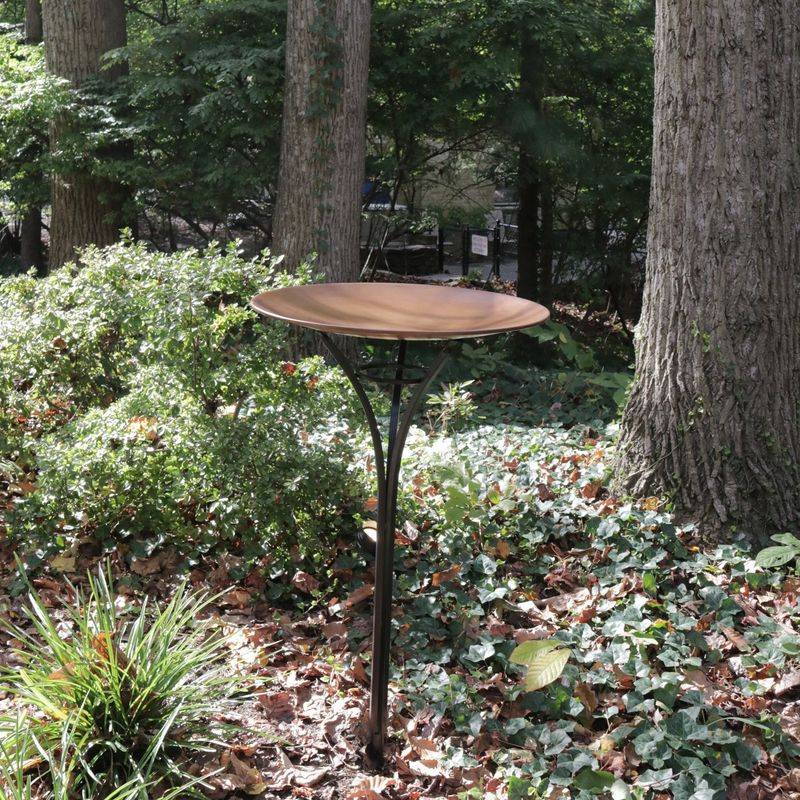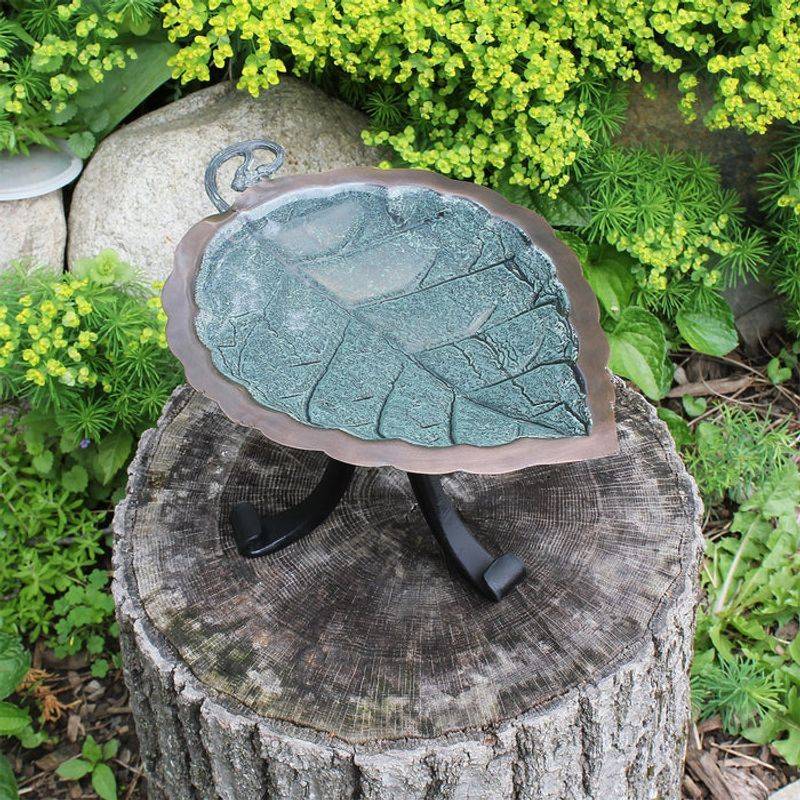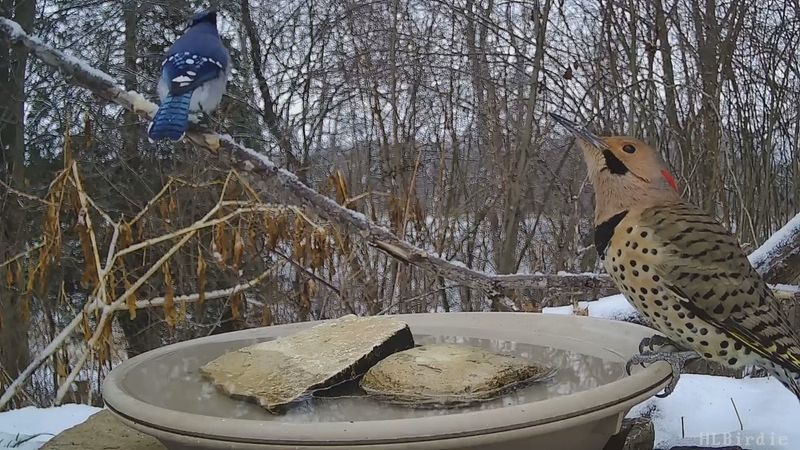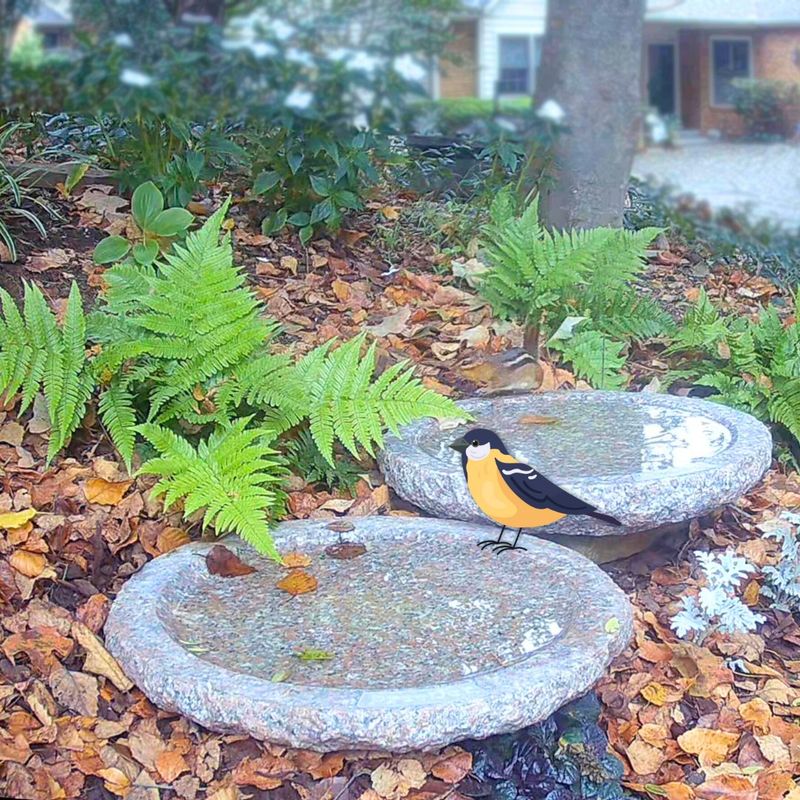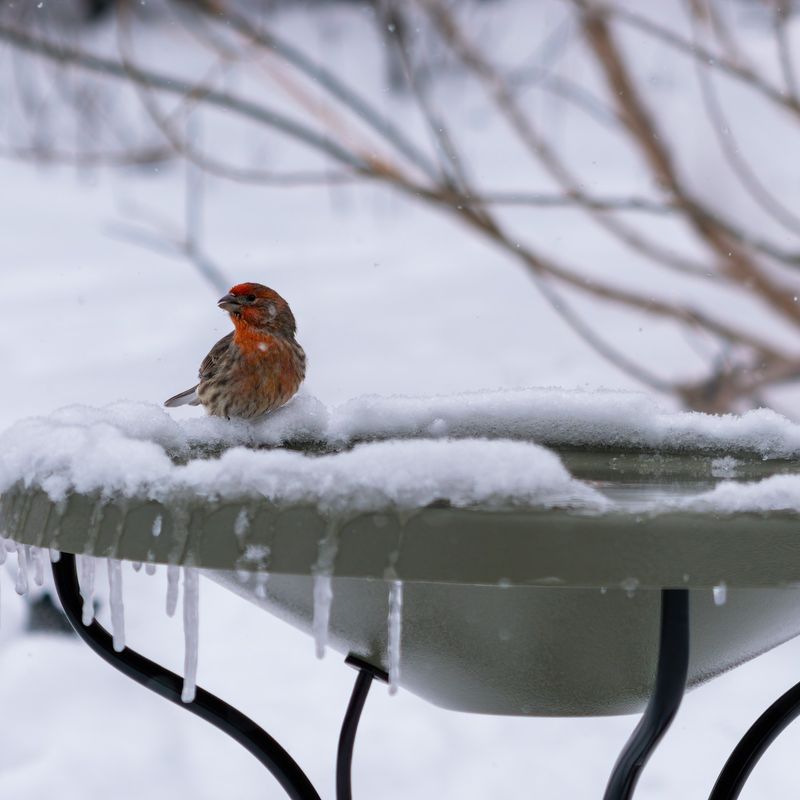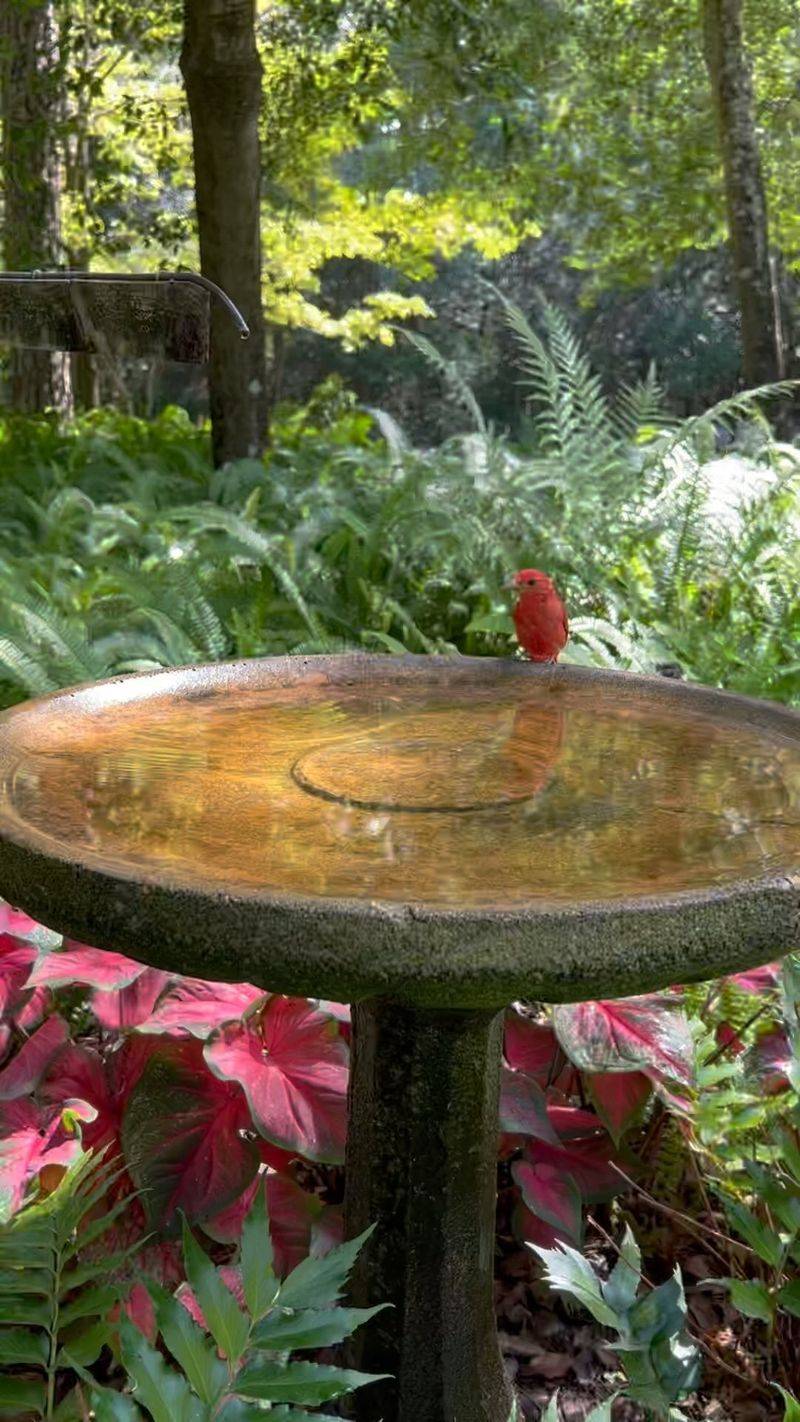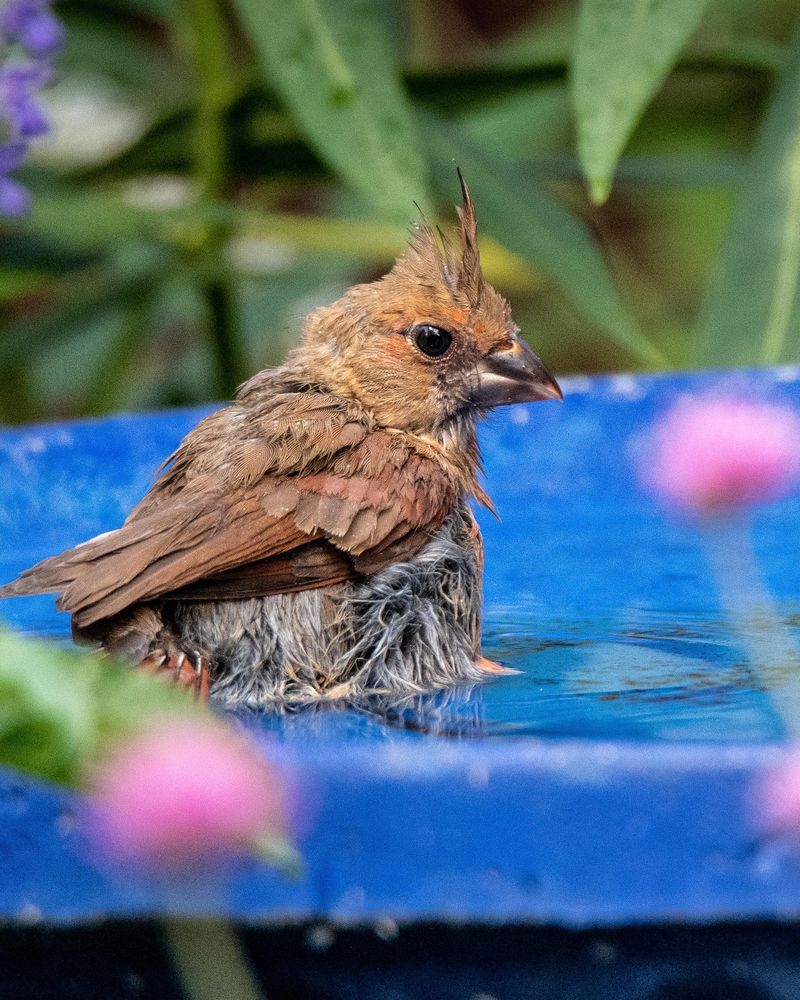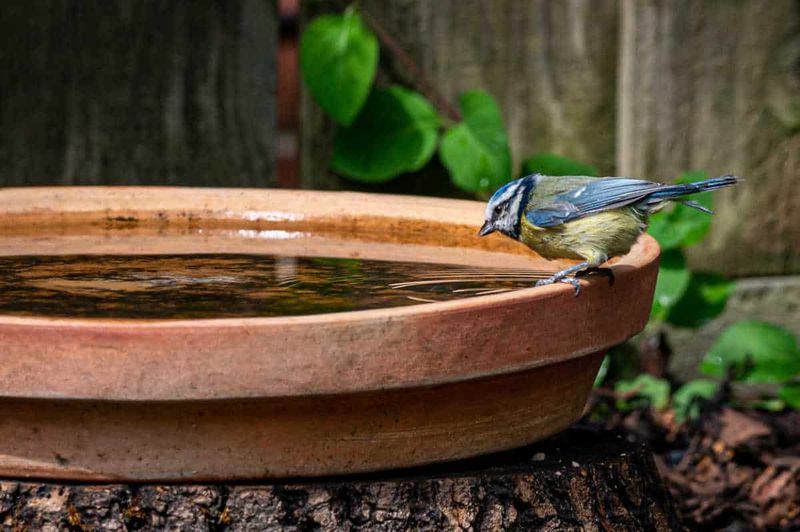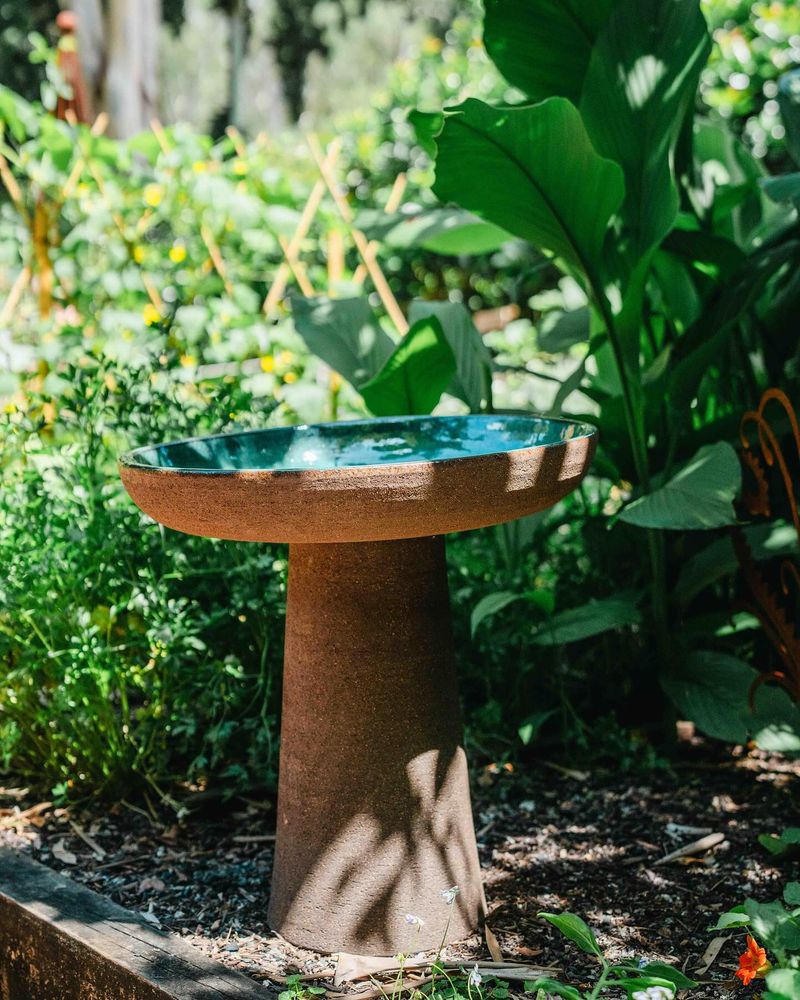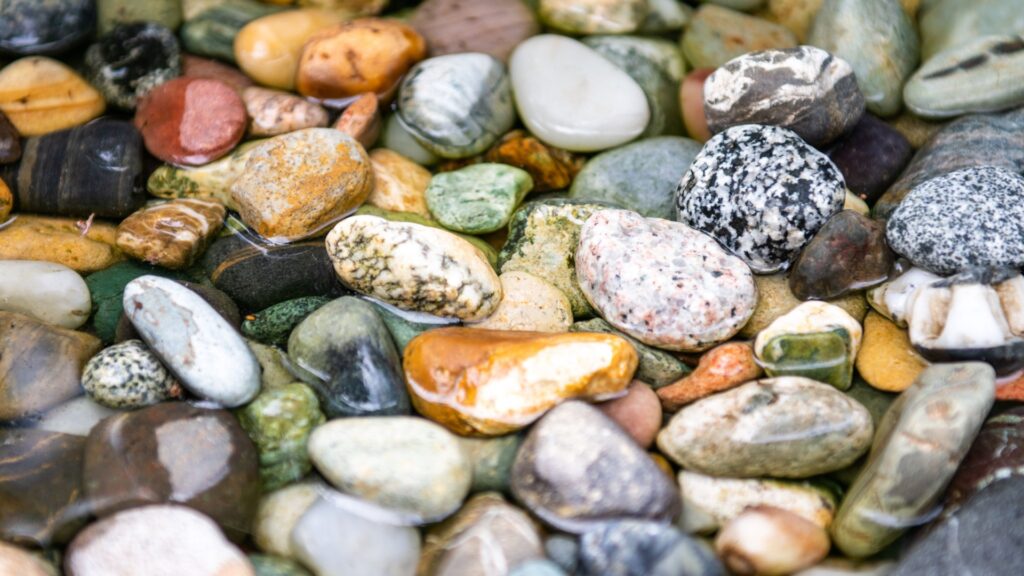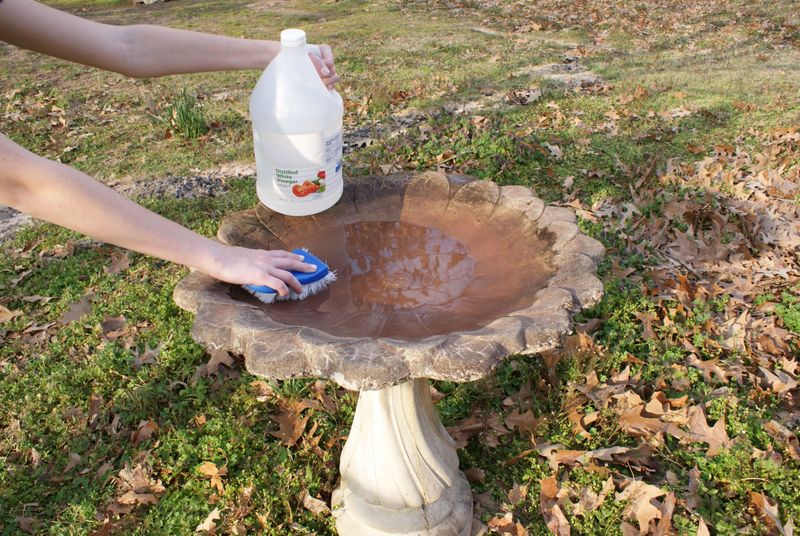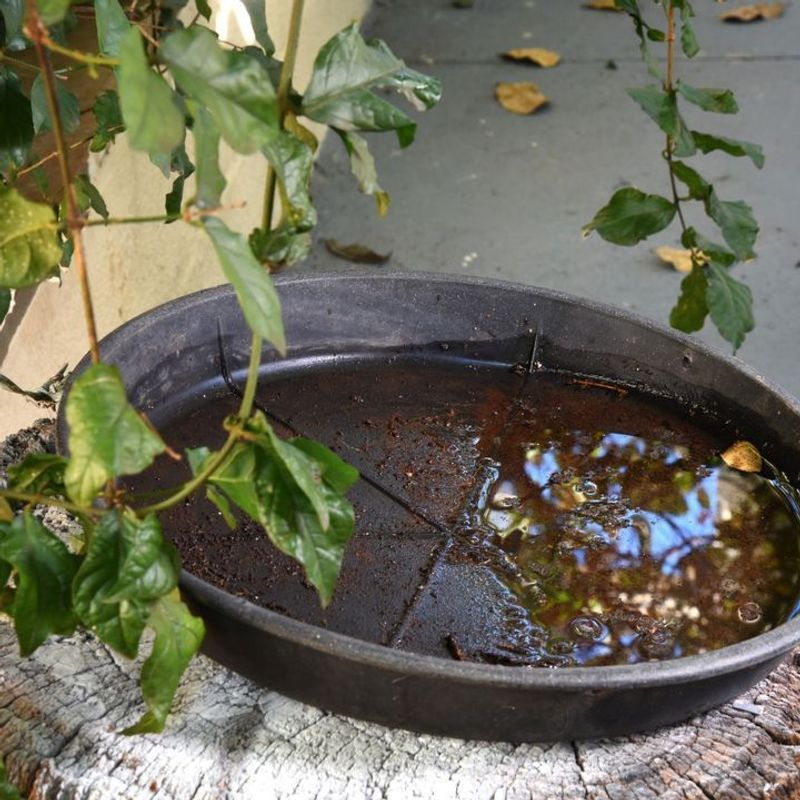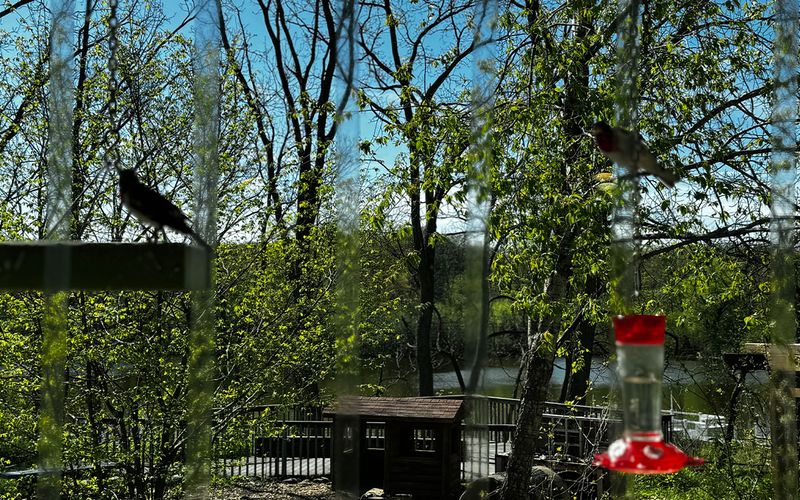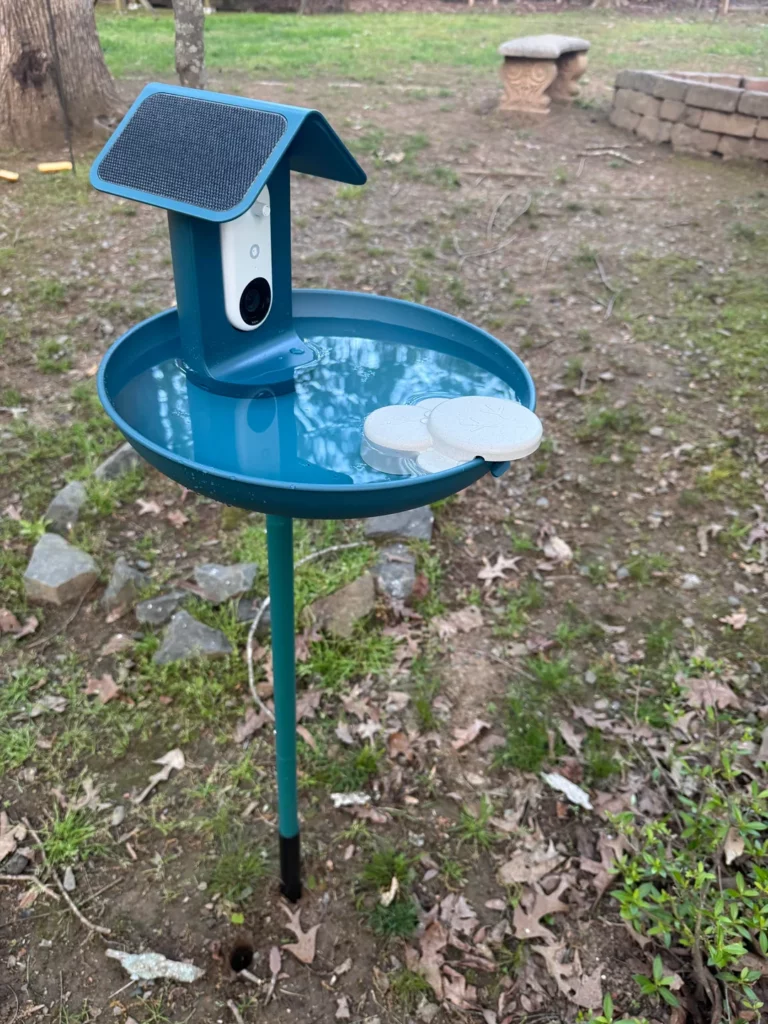There’s nothing more delightful than watching birds splash and play in a birdbath—unless your bath is as empty as a desert. I’ve been there, done that, and tested every trick in the book. These 15 tips? They actually work to bring birds flocking in like it’s happy hour at the neighborhood watering hole.
With just a few easy tweaks, your garden can go from ghost town to feathered fiesta. And to spare you the rookie stumbles I made, I’ve also thrown in 4 common mistakes that had my birdbath gathering dust instead of guests.
So let’s roll up our sleeves and turn that quiet basin into a chirping, splashing hotspot in no time!
1. Keep Water Fresh Daily
Birds avoid stagnant water just like we do! Dumping and refilling your birdbath each morning makes it instantly more appealing to feathered visitors. Fresh water prevents mosquito larvae, harmful bacteria, and that yucky film that develops on standing water.
Many birds actually have excellent eyesight and can spot clean, sparkling water from impressive distances while flying overhead. Your daily water change might take just 60 seconds, but it’s the single most effective way to multiply your bird visitors.
2. Create a Water Movement Feature
Moving water acts like a magnet for birds! The gentle sound and glimmering surface catch their attention from far away. You can create this effect with an inexpensive solar fountain, a dripper attachment for your hose, or even a repurposed plastic bottle with a tiny hole punched in it.
Birds instinctively associate moving water with freshness and safety. Many species that might ignore a still birdbath will become regular visitors when they spot ripples or hear the inviting sound of dripping water in your yard.
3. Maintain Shallow Water Levels
Birds aren’t looking for a swimming pool! Most songbirds prefer water that’s only 1-2 inches deep for safe bathing and drinking. The ideal birdbath has a gradual slope with varying depths, allowing different sized birds to find their comfort zone.
If your bath is too deep, place clean rocks or pebbles in one section to create a shallow area. This simple addition provides safe footing for nervous birds and makes smaller species feel secure enough to visit. Many first-time birdbath users make the mistake of filling too deep!
4. Position Near Protective Cover
Birds feel vulnerable when bathing! Placing your birdbath about 10-15 feet from shrubs or trees creates the perfect setup – close enough for quick escape from predators, but far enough that cats can’t easily ambush them from hiding spots.
Watch how birds approach your bath – they’ll often perch nearby first, checking for danger before committing to bath time. These protective perches are essential for building bird confidence. Many birders notice immediate increases in visitors after simply relocating their bath closer to natural cover.
5. Add Textured Landing Spots
Slippery surfaces make birds nervous! Adding texture to your birdbath rim gives visitors secure footing when they land. Natural materials work wonderfully – try gluing small pebbles around the edge or placing thin branches across one section.
Birds need to feel stable before committing to bathing time. Especially in winter, these grippy surfaces prevent dangerous slips. Even commercial birdbaths benefit from this simple upgrade, as many manufacturers prioritize appearance over bird-friendly features.
6. Choose Earth-Toned Bath Colors
Flashy colors might catch human eyes, but birds prefer natural earthy tones that mimic their natural water sources. Terra cotta, soft gray, or speckled stone finishes attract more birds than bright blue or neon-colored baths.
Birds evolved to recognize water in natural settings – think forest puddles, stream edges, and rock depressions. Your birdbath should blend with nature rather than stand out artificially. Many birdwatchers report significantly more activity after switching from decorative baths to more natural-looking models.
7. Provide Perching Branches
Birds appreciate a staging area! Adding a few small branches that extend over or near your birdbath creates perfect perching spots for hesitant visitors. These branches serve as a landing zone where birds can pause, assess safety, and preen before or after bathing.
Notice how wild birds rarely dive straight into water – they follow a careful routine of landing nearby first. Creating this natural approach pattern in your yard makes birds feel more comfortable. Try securing a few twiggy branches to the sides of your bath for an instant bird-friendly upgrade.
8. Place Bath at Proper Height
Ground-level baths attract the most diverse bird species! While elevated baths may seem safer, many birds naturally seek water at ground level. A height of 2-3 feet off the ground represents an ideal compromise between accessibility and safety from predators.
Different birds have different preferences – robins and thrushes love ground baths, while finches and chickadees prefer elevation. If possible, offer multiple baths at varying heights to welcome the widest variety of feathered visitors. The bird diversity in your yard will expand dramatically!
9. Maintain Year-Round Availability
Winter water access is precious to birds! Using a simple birdbath heater during freezing months can make your yard an essential resource when natural water sources freeze over. Birds remember reliable water sources and will visit your yard faithfully.
Just a thin opening in the ice can serve dozens of birds daily during winter. Modern birdbath heaters use minimal electricity and include safety features that prevent overheating. Your winter birdbath will attract species you might never see in warmer months, including unusual winter visitors to your region.
10. Create a Dripping Water Feature
The sound of dripping water acts like a dinner bell for birds! Setting up a simple drip system using a recycled plastic container with a tiny pinhole creates an irresistible attraction. Position it above your bath so it creates gentle drops every few seconds.
Birds can hear this distinctive sound from surprising distances. The regular drip-drip-drip triggers their instinct to seek out fresh water. Many birdwatchers report attracting species they’ve never seen before after adding this simple feature, especially during migration seasons when birds are actively searching for resources.
11. Keep Predators Away
Birds won’t visit if they feel threatened! Position your bath in open space where birds can spot approaching cats or other predators. Avoid placing it near dense ground cover where cats can hide, or too close to bird feeders which attract jays and other potential aggressors.
Consider adding a protective barrier like chicken wire around ground baths during nighttime hours when raccoons and other nocturnal visitors might contaminate the water. Neighborhood cats learn quickly which yards have accessible birdbaths, so staying vigilant about shooing them away consistently helps maintain a safe bird sanctuary.
12. Include Nearby Dust Bathing Areas
Birds need dust baths too! Creating a small area of fine sand or loose soil near your water bath provides a complete bathing station. Birds use dust to remove parasites and excess oils from their feathers in between water baths.
A shallow dish or depression filled with clean sand, placed in a sunny spot, makes the perfect dust bath. You’ll be amazed watching birds enthusiastically fluff and toss the material through their feathers. This combination of water and dust bathing options makes your yard a complete bird spa destination!
13. Clean Regularly With Natural Methods
Harsh chemicals repel birds! Clean your birdbath using a simple solution of nine parts water to one part vinegar, which safely removes algae and grime without leaving harmful residues. A stiff brush helps scrub away stubborn deposits without damaging most bath materials.
Establish a weekly deep-cleaning routine during warm months when algae grows quickly. Between cleanings, simply dumping and refilling daily prevents most problems. Birds can detect even tiny amounts of chemicals in water, so never use bleach, detergents, or commercial cleaners that might harm their delicate systems.
14. Place Multiple Baths Around Your Yard
Bird territories matter! Different species often avoid sharing bathing spaces, so offering multiple smaller baths increases your overall bird traffic. Simply placing shallow dishes of water in various garden locations can dramatically boost your bird diversity.
Consider how birds naturally find water in scattered puddles and streams rather than one central location. These multiple stations reduce competition and bird stress. Even something as simple as a plant saucer filled with water and placed on a stump can attract birds that might avoid your main bath.
15. Add a Splash Rock or Pebble Fountain
A simple splash rock—just a flat stone placed so water gently trickles over it—can be irresistible to birds. The sound of splashing mimics natural creeks, and the glistening movement helps passing birds spot your bath from the air. You can achieve this effect by adding a small recirculating pump under a decorative rock or using a shallow pebble mound with trickling water.
This feature not only attracts more birds but encourages longer stays, as birds love hopping around the bubbling surface. It’s especially appealing to smaller species like warblers and wrens that might skip a still birdbath but will linger at a gently splashing one.
16. NEVER Use Chemical Additives
Those blue water tablets might look pretty, but they’re dangerous for birds! Chemical additives marketed to keep water clear can harm birds’ delicate respiratory systems and feathers. Even products labeled “safe” often contain ingredients that build up in birds’ bodies over time.
Natural alternatives work better anyway. A few copper pennies (pre-1982) placed in the bath naturally prevent algae growth. Some birds are so sensitive they can detect chemical traces in parts per million and will avoid treated water entirely, defeating the purpose of your birdbath.
17. NEVER Leave Water Stagnant
Stagnant water becomes a health hazard! Standing water quickly becomes a breeding ground for mosquitoes and harmful bacteria that can spread diseases among your bird visitors. During summer months, water can become dangerously stagnant in less than 48 hours.
Birds instinctively avoid still, stale water. If you’re going away for more than a day, either empty your bath completely or install an automatic water mover. Mosquito larvae need at least 24 hours of still water to develop, so daily water changes or movement effectively prevents these pests.
18. NEVER Position Near Windows
Window collisions kill millions of birds yearly! Placing a birdbath too close to windows creates a deadly hazard as birds may fly into the glass when startled. The ideal location is either more than 30 feet from windows or less than 3 feet away (where birds can’t build up fatal momentum).
If you must place a bath near windows, use decals, screens, or string patterns on the glass to make it visible to birds. The momentary joy of watching birds up close isn’t worth the risk of fatal collisions. Many experienced birders learn this lesson the hard way after tragic accidents.
19. NEVER Use Slippery or Metal Surfaces in Full Sun
Metal birdbaths may look sleek, but they heat up dangerously in direct sunlight—especially during summer. Birds can burn their feet or avoid the bath altogether if the surface becomes too hot. Similarly, glazed ceramic or overly smooth plastic can turn into slick hazards, making birds hesitant to land or bathe.
Opt for natural stone, textured concrete, or shaded placements if you prefer decorative materials. Providing traction and temperature control is essential to ensuring your birdbath stays both safe and attractive. If you’ve noticed birds circling but not landing, your bath’s material or placement could be the reason.

